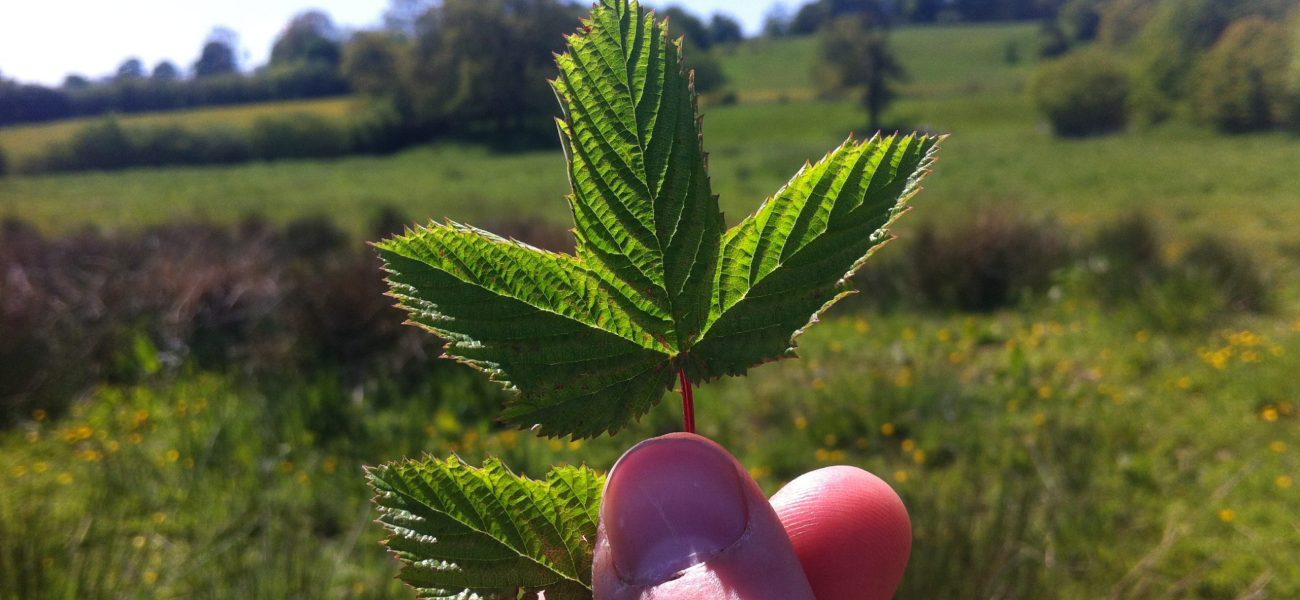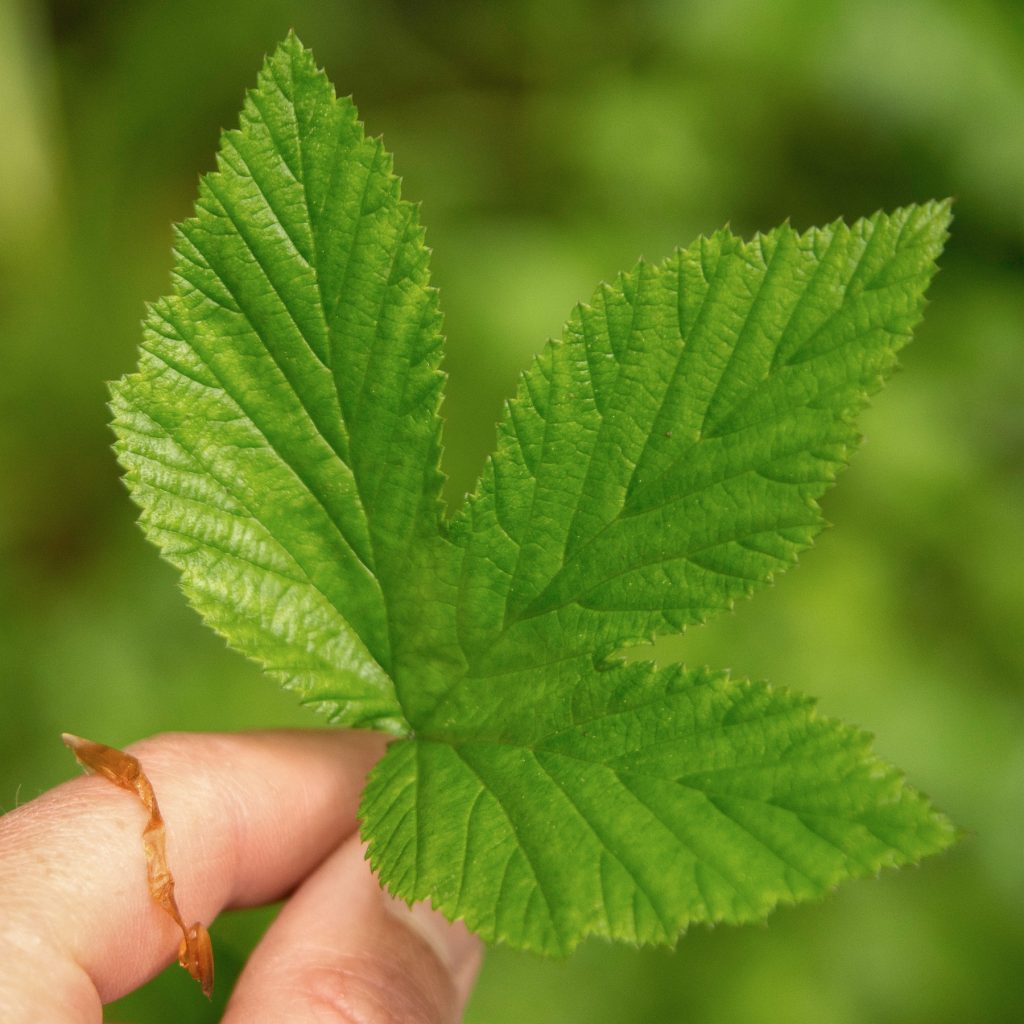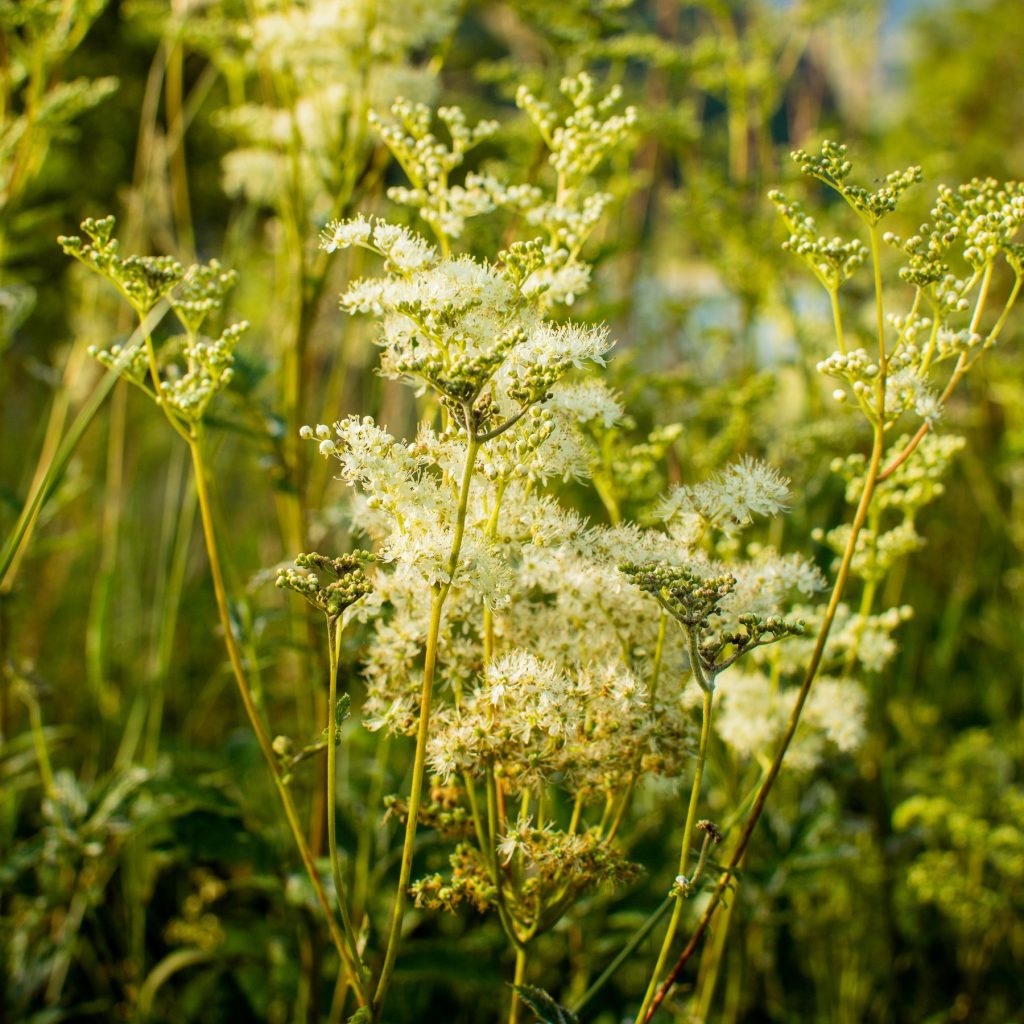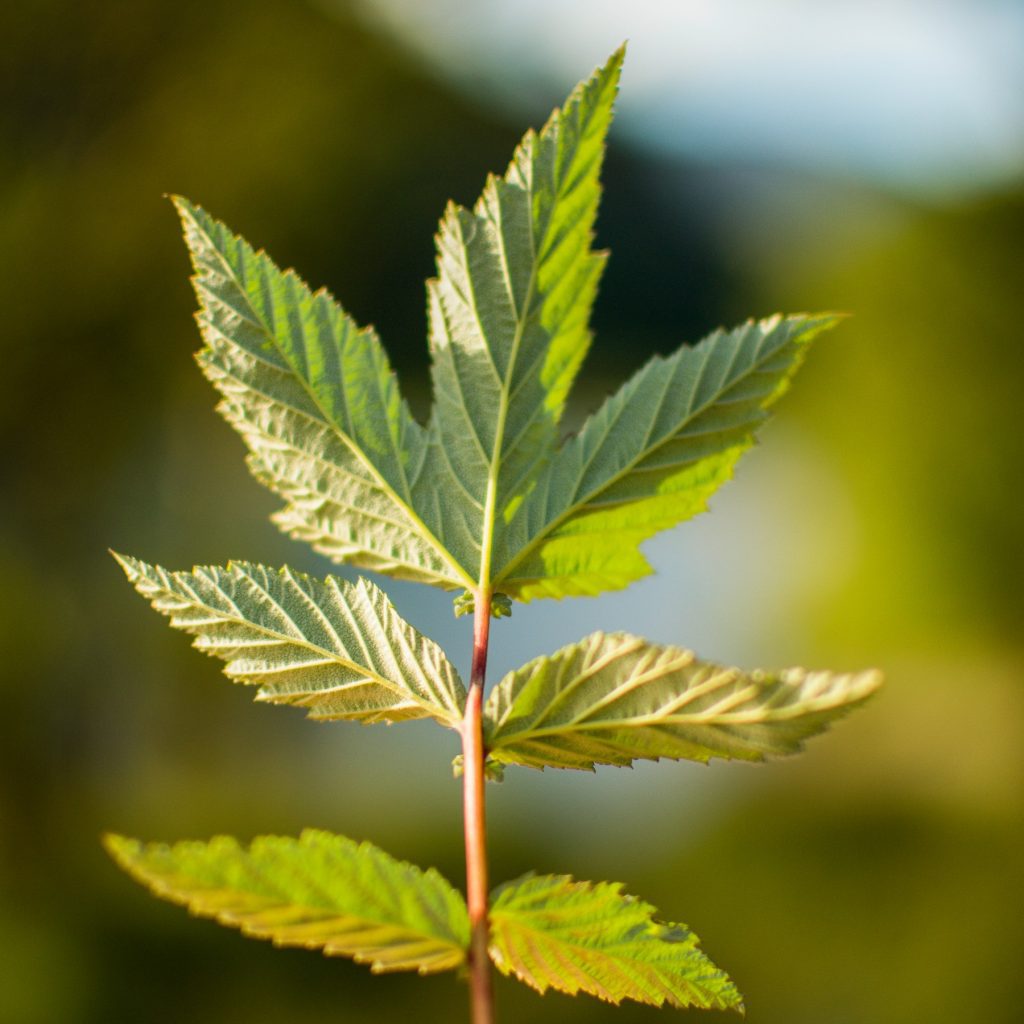What can I do with Hawthorn Berries?
The fruits are easy to identify and collect in large quantities and can be used to make fruit leathers (another name for a fruit roll-up),…

4th April 2018
Meadowsweet (Filipendula ulmaria) is a commonly found distinctive flowering plant. The scent, somewhere between caramel and Germolene, combined with the unique shape of the leaves and the delicate flowers make this an easily identified and unusual foraging ingredient.
As the name suggests, Meadosweet can often be found in meadows (although the name is more likely to be from mead-sweet and named for the practice of using it in the brewing of ales and fermenting mead). It is also found in damp woodlands and along waysides/roads – you can often see the white ‘candy floss’ flowers alongside roads and tracks. In spring the small leaves can be found just poking up above the grass at the edges of hedgerows, meadows and watercourses.
Meadowsweet is quite edible, but the trick is finding something to do with it! The plant contains several useful chemicals, principal of which is salicylic acid. This chemical, found in many other species, was distilled and synthetically altered into the drug we know as aspirin, named for the old latin name for Meadowsweet – Spirea ulmaria. Meadowsweet has a long relationship with alcoholic beverages in several countries, and is often used at some point in the preparation of mead, wine and ales as a flavouring. I use it to flavour Thai-inspired stir fries and curries, and I know of at least one London restaurant that distills the plant into an essence to flavour the caramelised top layer of Crème Brûlée.
The three identifying characteristics I use for showing off Meadowsweet to foraging clients are the sycamore-style leaf at the end of the stem (with pairs of leaves along the stem below), the dual-coloured stem itself (deep red on one side, pale/green underneath and the flowers themselves. The scent of the flowers or crushed leaves/stem are also useful for identification – Germolene ointment mixed with a bit of caramel.
There are few plants that can be mistaken for Meadowsweet after a little examination, but something for asthmatics – and others who must avoid Non-Steroidal Anti Inflammatory Drugs (NSAIDs) – is that it can induce some asthmatic symptoms (see notes above about salicylic acid and aspirin).



Foraging and hunting for wild food is a potentially hazardous activity. Whilst we try to make sure these wild food guides are as accurate as possible there is ALWAYS the possibility of misidentifying a plant or other item and the descriptions given might also apply to similar toxic plants. Common names cannot be relied upon as they change from region to region, and there are some similar names for very different plants.
You should always be confident of the identification of a plant, fungus or lichen BEFORE you touch it and especially before you put it anywhere near your mouth. The best way to do that is by checking with a good wild flower key or identification book, and ideally cross-referencing between more than one book. We have a blog post on some of the foraging guide books that we recommend HERE. We also deliver foraging and wild foods training in person and online.
A Mountain Leader with over a decade of experience across the UK and overseas, Richard is our Lead Instructor and a partner in Original Outdoors. He is a specialist in temperate wilderness skills and the wild foods of the British Isles, and also works as a consultant for various brands and organisations. Richard lives in North Wales.
A Life More Wild is the philosophy which underpins everything we do.
It encompasses practical skills, personal development, community learning and a journey to live more intentionally.
The fruits are easy to identify and collect in large quantities and can be used to make fruit leathers (another name for a fruit roll-up),…
North Wales is a fantastic place to look for fungi, with a wide range of habitats and ideal climate. If you’ve been out to a…
This mushroom can be used in stocks, dried and ground down into a powder, or cooked into casseroles, stir fry’s and soups. Our favourite use…
Sloes are ripe before the first frosts these days, but you can use a freezer to imitate the affect of a frost and have some…
